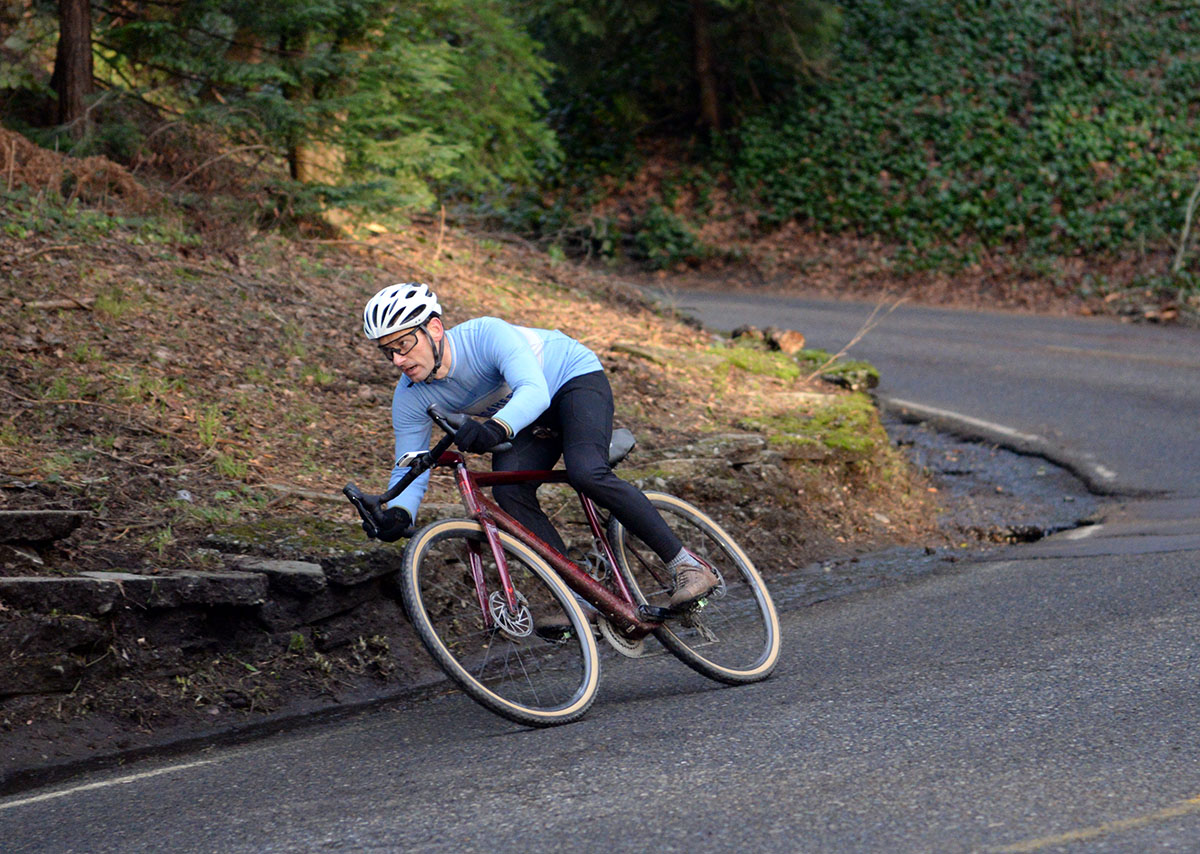


Getting into gravel biking is exciting, and if you’re eager to pick up the pace, we’ve got you covered! This guide is all about “How To Make My Gravel Bike Faster” with some simple tips.
Increase your gravel bike’s speed by optimizing tire pressure, upgrading to smoother tires, and maintaining a streamlined body position. Regularly clean and lubricate your bike’s drivetrain, and consider lighter components for enhanced agility.
Experiment with these tips to enjoy a faster, more thrilling gravel biking experience.
Whether you’re new to biking or a pro, these easy tweaks will add some speed and fun to your gravel ridings.
Choosing Smoother Tires for Your Gravel Bike



Selecting the right tires for your gravel bike can make a world of difference in your riding experience. In this guide, we’ll explore the importance of smoother or semi-slick tires and how they can elevate your biking adventures in simple terms.
Why Smoother Tires Matter:
Smoother tires are made to lessen rolling resistance, helping your bike move more efficiently. This can lead to a faster and smoother ride, especially on well-maintained or paved surfaces.
Types of Gravel Tires:
Slick Tires:
- Smooth surface with minimal tread.
- Ideal for pavement and hard-packed gravel.
File Tread Tires:
- Slight tread for a balance of speed and traction.
- Suitable for various gravel terrains.
Smooth Center with Knobby Edges:
- Combines speed on straight paths with grip in turns.
- Versatile for mixed gravel conditions like in muddy conditions.
Consider Your Riding Conditions:
Paved Roads:
Opt for slick or lightly tread pattern tires for maximum speed.
Mixed Terrain:
Choose a tire with a balanced tread for flexibility.
Rough Gravel Trails:
Tires with more aggressive tread provide better traction.
Balancing Speed and Traction:
While smoother tires enhance speed, it’s crucial to find a balance that suits your riding style and the terrains you frequent. Experimentation is key to discovering the right tire for your preferences.
Maintenance Tips:
Regularly check your tire pressure and keep an eye on tread wear. Taking good care of your mountain bike tires helps them work well and last longer.
Conclusion:
Choosing smoother tires is a simple yet effective way to boost the performance of your gravel bike. Think about where you usually ride, find the right mix of speed and grip, and enjoy faster rides on your gravel adventures.
Read More: How To Build A Gravel Bike(Step-by-Step Guide)
Optimize Tire Pressure
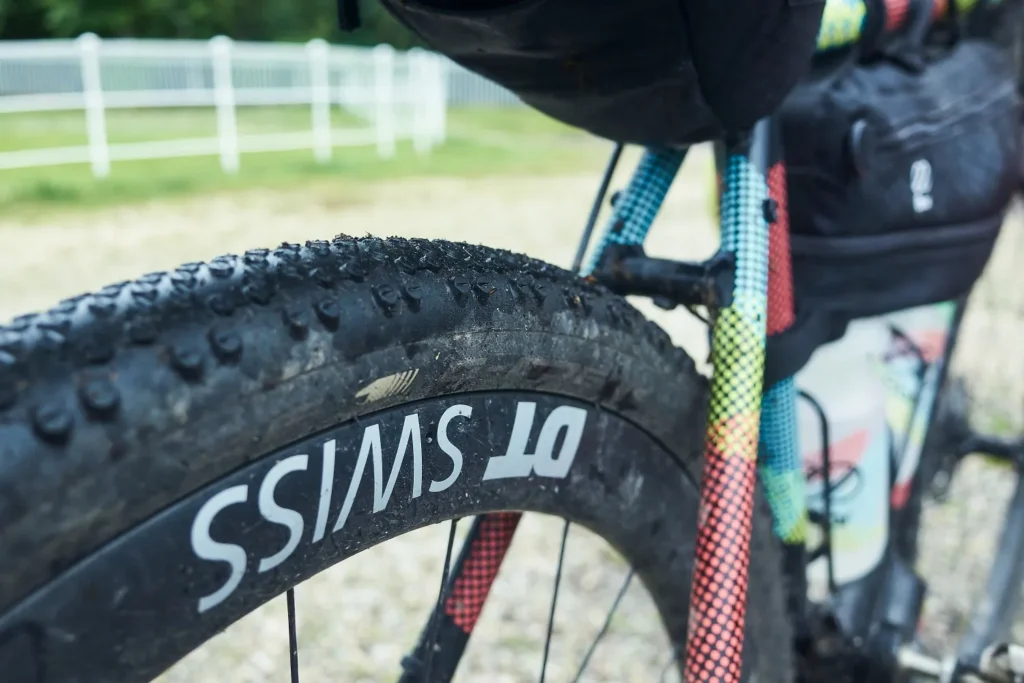


Finding the right tire pressure for your gravel bike is like discovering the perfect balance between comfort and speed. In this guide, we’ll explore how to get the right tire pressure for smoother and faster rides.
Why Tire Pressure Matters:
The pressure within your bike tires has a significant impact on how it performs on different terrains. Too much pressure and your ride becomes bumpy, less controllable, and you might sacrifice traction. Too little pressure, and you’ll feel like you’re pedaling through molasses, making it harder to maintain speed on roads and trails.
Finding the Sweet Spot:
Check Manufacturer Recommendations:
Start by looking at the recommended tire pressure range provided by the manufacturer. You can usually locate this information on the side of your front and rear bike tires.
Consider Your Weight:
Your weight plays a role in determining the ideal tire pressure. If you’re a heavier rider, use a bit more pressure to avoid flat tires. Lighter riders can go with slightly less pressure for a more comfortable ride.
The Goldilocks Zone:
Experimenting is key to finding the perfect tire pressure for your gravel bike. Start in the suggested range and make slight changes as needed. Take your bike for a spin, paying attention to how it feels on different surfaces. Here’s a general guide:
Low Pressure (More Comfort):
- Suitable for rough and loose terrains.
- Offers better traction and absorbs bumps.
- May feel slower on smoother surfaces.
High Pressure (More Speed):
- Ideal for smooth and hard-packed surfaces.
- Reduces rolling resistance for a faster ride.
- May result in a harsher feel on bumpy trails.
Regular Checks:
Tire pressure isn’t a one-time fix. Weather and how you ride can change it. Make it a habit to check and adjust your tire pressure regularly for optimal performance.
Conclusion:
Optimizing tire pressure is a simple yet powerful way to enhance your gravel biking experience. Experiment, pay attention to how your bike responds, and find that sweet spot that gives you the perfect blend of comfort and speed.
Read More: How To Make A Gravel Bike More Comfortable
Achieving an Efficient Posture on Your Gravel Bike



The way you sit on your gravel bike plays a big role in how fast and comfortable your rides can be. Let’s learn the basics of having a good riding posture to make biking smoother and more enjoyable.
Why Riding Posture Matters:
Your posture affects your bike’s stability, speed, and your own comfort. A good posture makes it easier to pedal and keeps your body comfy during long rides.
Elements of an Efficient Riding Posture:
Straight Back:
Keep your back straight to distribute your weight evenly. This minimizes strain on your lower back.
Bent Elbows:
Maintain a slight bend in your elbows to absorb shocks and maintain control. This reduces arm fatigue.
Relaxed Grip:
Hold the handlebars with a relaxed grip. Gripping too tight can lead to tension and discomfort.
Neutral Head Position:
Keep your head up and look straight ahead. This helps with balance and awareness of your surroundings.
Bend at the Hips:
Lean slightly forward from your hips. This streamlined position reduces wind resistance, making you more efficient.
Finding Your Ideal Position:
Try making small changes to find a posture that feels comfy and works well for you. It’s a personal preference, so take the time to discover what works best.
On Uphills and Downhills:
Uphills:
Shift your weight forward, keeping your upper body closer to the handlebars for better power transfer.
Downhills:
Shift your weight to the rear of the saddle, allowing the bike to roll smoothly over obstacles. Hold the brake levers gently for quick braking.
Regular Checks:
Regularly check and adjust your saddle height and handlebar position. Small changes can make a big difference in your riding comfort and efficiency.
Conclusion:
Achieving an efficient riding posture is a simple yet impactful way to enhance your gravel biking experience. Pay attention to these basics, make small adjustments for comfort, and ride in a way that makes your journey on gravel trails smoother and faster.
Read More: Can You Turn A Road Bike Into A Gravel Bike
Essential Drivetrain Maintenance for Your Gravel Bike
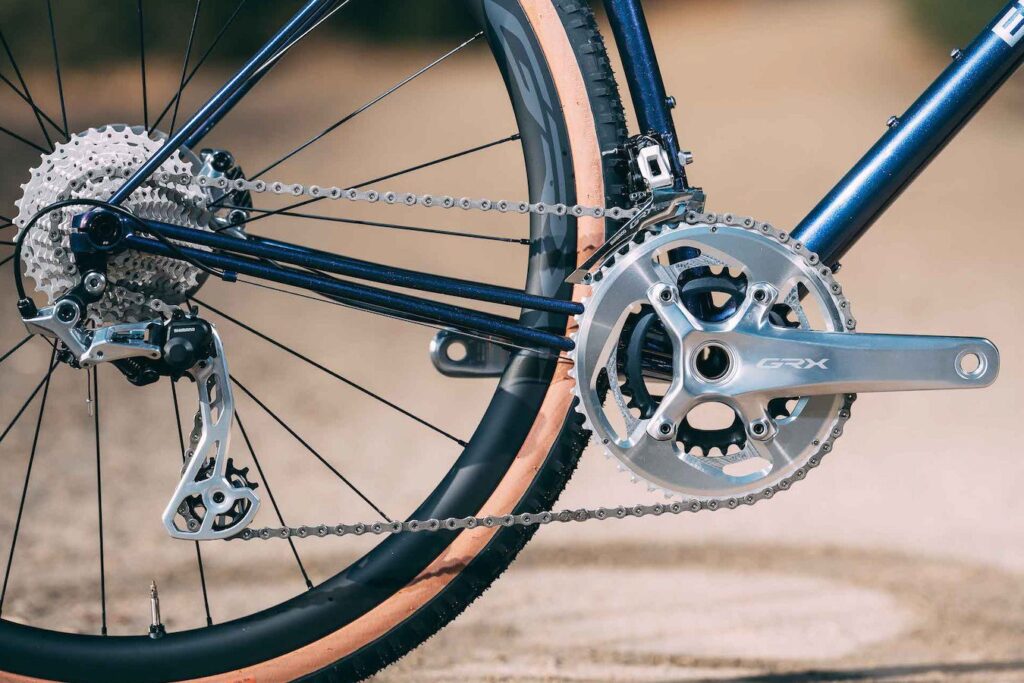


Your bike’s drivetrain is like its heart, powering every pedal push. Let’s chat about the basics of keeping it in good shape so your gravel bike stays smooth and efficient.
Why Drivetrain Maintenance Matters:
The drivetrain includes things like the chain, cassette, and derailleurs. Regular care helps them work well and last longer.
Basic Drivetrain Components:
The chain needs to stay clean to reduce rust and friction. If it looks worn or stiff, it’s time for a change.
The cassette, the cluster of gears on your bike’s rear wheel, stays happy when kept clean, and worn-out teeth should be replaced.
The derailleurs, those moving parts that help shift gears, need to be aligned and oiled. Keep an eye out for anything broken or loose.
Cleaning and Lubricating:
For a smooth ride, your chain, cassette, and derailleurs need regular cleaning. A gentle brush and special cleaner work well for the chain, and adding a bit of bike oil keeps it running smoothly.
Wipe the cassette and derailleurs with a cloth to remove dirt, and apply oil where parts move.
Regular Inspections:
Check your chain for stretching using a tool. If it’s too stretched, replace it. Look at the cassette and chainrings for worn-out parts, especially teeth. If they look too old, it’s time for a change.
Shifting Adjustment:
Keep your gear changes smooth by adjusting cables or following your bike’s manual.
When to Get Help:
If you’re not sure or find bigger problems, get a bike expert to take a look.
Conclusion:
Taking care of your gravel bike’s drivetrain is simple but super important. With a clean and lubed-up chain, cassette, and derailleurs, you’ll enjoy a smoother ride on those gravel trails.
Choosing Lighter Parts for Your Gravel Bike
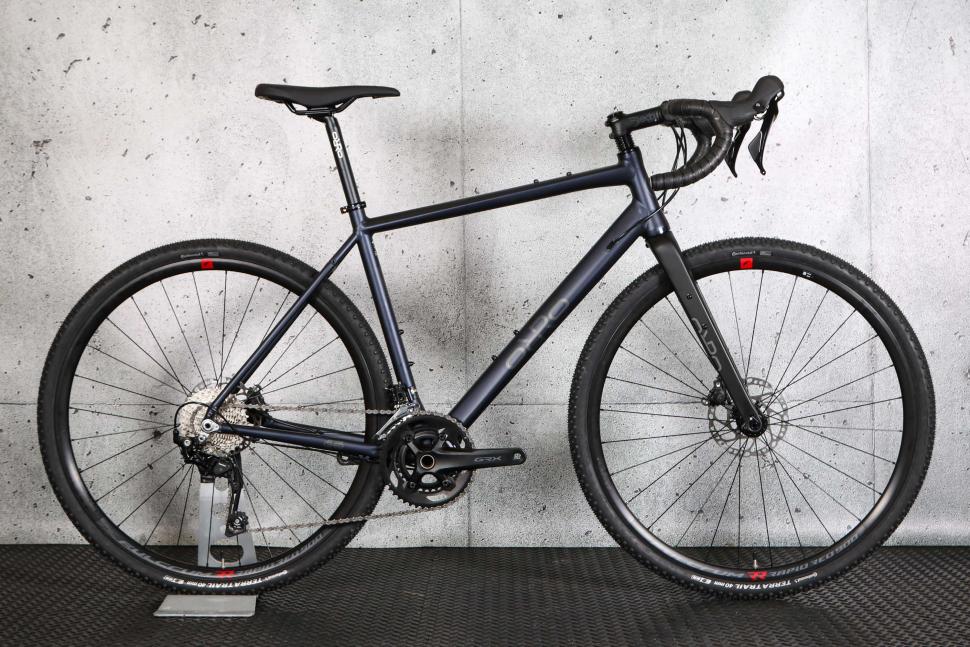


Ever thought about making your gravel bike feel lighter and more agile? Let’s explore how choosing lighter components can add some speed to your rides.
Why Lighter Components Matter:
Imagine your bike is shedding a few pounds – it’s like giving it wings. Lighter components mean less weight for you to pedal, making your bike more responsive and nimble. It’s a game-changer for both speed and efficiency.
Key Components to Consider:
Wheels:
Lighter wheels reduce rotational mass, making speed quicker. Materials like aluminum or carbon are good for saving weight.
Frame:
A lighter frame means less overall weight. Materials like carbon fiber are light and tough.
Handlebars and Stem:
Lighter handlebars and stems improve handling. Materials like aluminum and carbon work well.
Saddle:
A lighter saddle adds comfort without sacrificing speed. Look for designs with minimal padding for weight reduction.
Finding the Right Balance:
While lighter components offer benefits, it’s crucial to find a balance that suits your riding style. Consider the terrain you usually tackle and how much weight you’re comfortable sacrificing for added speed.
Benefits Beyond Speed:
Lighter parts not only make you faster but also help you feel less tired during longer rides. They make climbing hills more manageable and contribute to an overall more enjoyable biking experience.
Economical Considerations:
Lighter materials often come with a higher price tag. Consider your budget and prioritize components that offer the most significant performance gains for your investment.
Conclusion:
Choosing lighter components is like giving your gravel bike a boost. From rear and front wheels to the frame and beyond, each lighter part contributes to a faster, more enjoyable ride.
Experimenting for Faster Gravel Biking
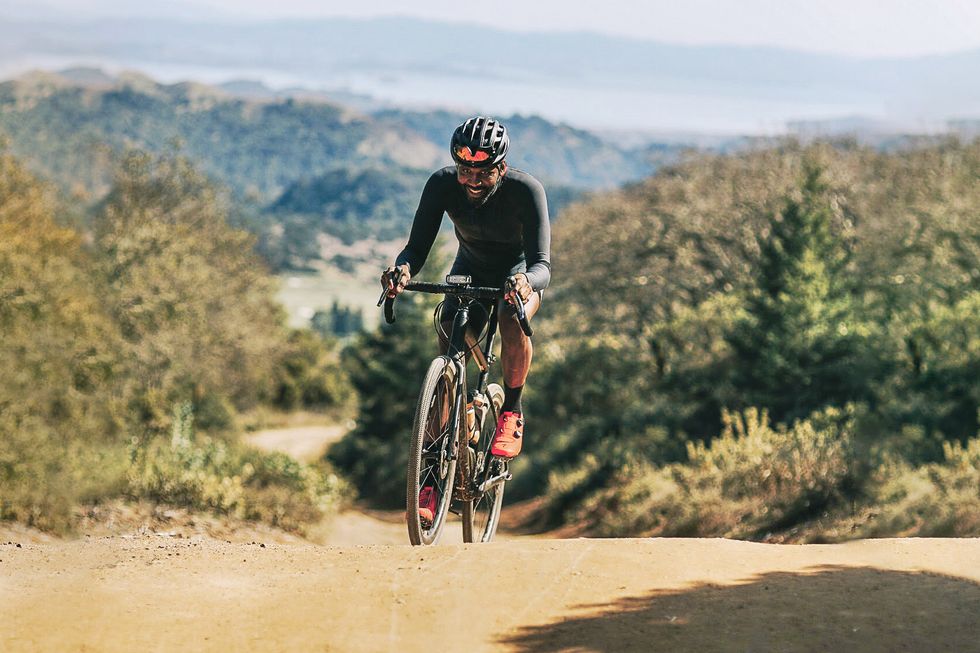


Ever wanted to unlock extra speed on your gravel bike? Let’s explore the fun world of experimenting for speed, where trying out different things can make your rides faster and more exciting.
Why Experiment for Speed Matters:
Gravel biking is a bit like a science experiment. By trying out new things, you can discover what works best for you, making your rides faster and more enjoyable.
Simple Experiments to Try:
Tire Pressure Trials:
Experiment with different tire pressures. Lower tire pressure for better grip on rough terrain, and use higher pressure for a faster ride on smoother surfaces.
Saddle Position Tweaks:
Adjust your saddle position slightly. A small change can make a big difference in how comfortable and fast your ride feels.
Handlebar Height Changes:
Play around with the height of your handlebars. Finding the right height can impact your riding posture and speed.
Gearing Adjustments:
Experiment with your bike’s gears. Finding the right gear ratio for different terrains can make pedaling easier and increase your overall speed.
The Joy of Discovery:
The best part about experimenting for speed is the joy of discovery. It’s like unlocking secret powers in your bike. Don’t be afraid to try new things and see what feels best for you.
Recording Your Experiments:
Keep a simple journal of the changes you make and how they affect your speed. This way, you can remember what worked well and what didn’t for future rides.
Safety First:
While experimenting is fun, always prioritize safety. Make changes gradually and ensure everything feels stable before going for a full ride.
Conclusion:
Experimenting for speed is like being a mad scientist on your gravel bike. Tire pressures, saddle positions, handlebar heights, and gears are your tools for discovering the perfect formula for faster rides.
Final Verdict (How To Make My Gravel Bike Faster)
So, there you have it—simple ways to make your gravel bike faster and more exciting! From adjusting tire pressure to experimenting with your bike’s components, each small change can add a burst of speed to your gravel race.
Remember, it’s like a fun experiment, and the joy comes from discovering what works best for you. So, hop on your bike, try out these tips, and enjoy the thrill of a faster and more thrilling gravel biking adventure!
FAQs:
What are the best tires for making my gravel bike faster?
Opt for low-resistance, wider tires with a smooth center tread for faster gravel biking. Tubeless setups can also reduce rolling resistance.
How can I reduce the weight of my gravel bike for more speed?
Shedding weight through components like carbon wheels, a lighter frame, and a minimalist approach to accessories can increase your bike’s speed.
Are there any aerodynamic upgrades for gravel bikes to increase speed?
Consider aero handlebars, frame designs, and clothing to reduce wind resistance and boost speed on your gravel bike.
What’s the ideal tire pressure for maximizing speed on a gravel bike?
Start with the manufacturer’s recommendation, then fine-tune. For gravel speed, around 35-45 PSI is a good range, depending on terrain and rider weight.
What drivetrain upgrades can I consider to improve the speed of my gravel bike?
Enhance speed with a wide-range cassette, lightweight chainrings, and precise shifting components like a high-quality derailleur and chain for improved power transfer.
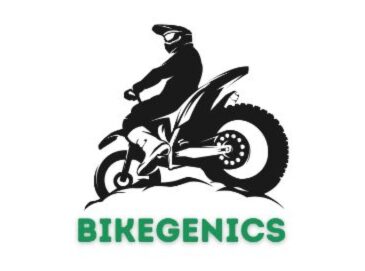


Welcome to Bikegenics, where passion meets performance! We are a leading online destination for all things related to mountain biking, dedicated to providing you with top-notch gear, expert advice, and an immersive community to fuel your two-wheeled adventures. With a commitment to excellence and a deep love for the sport, we strive to elevate your biking experience to new heights.
